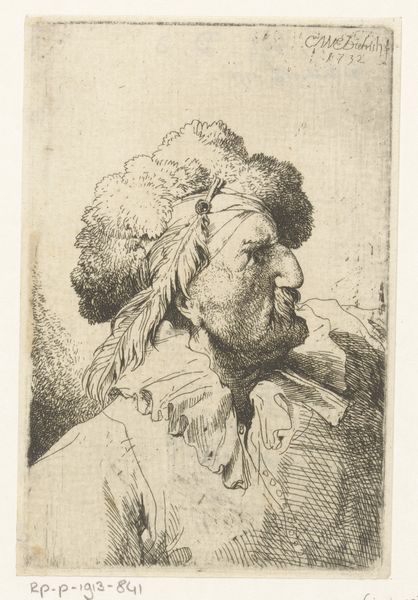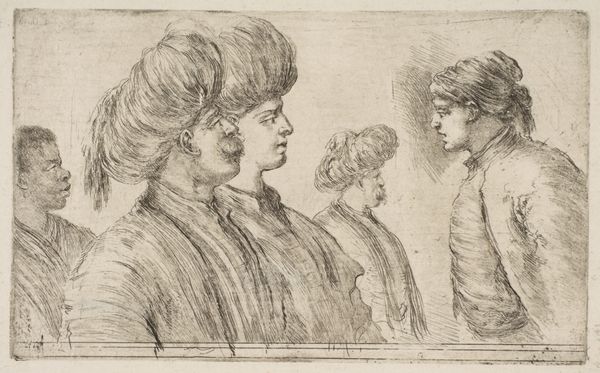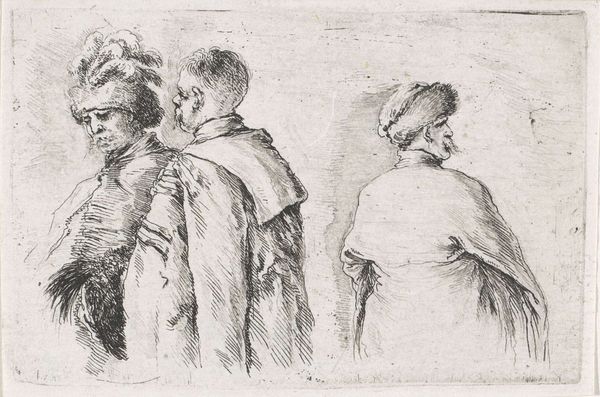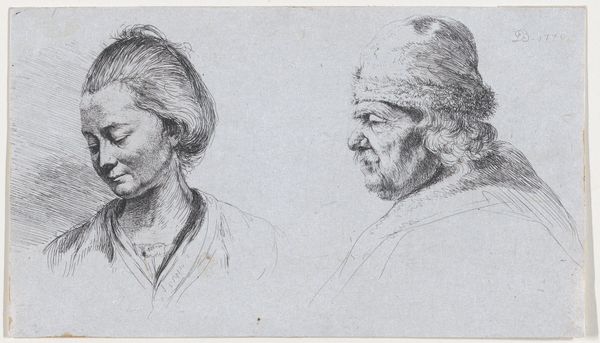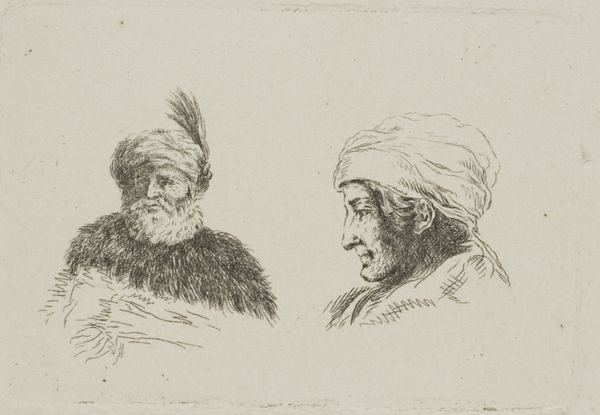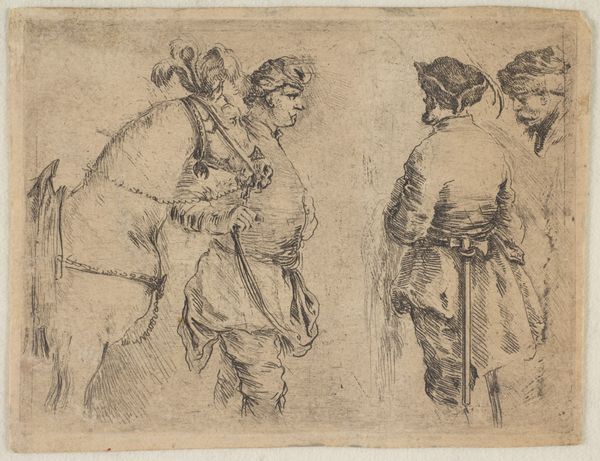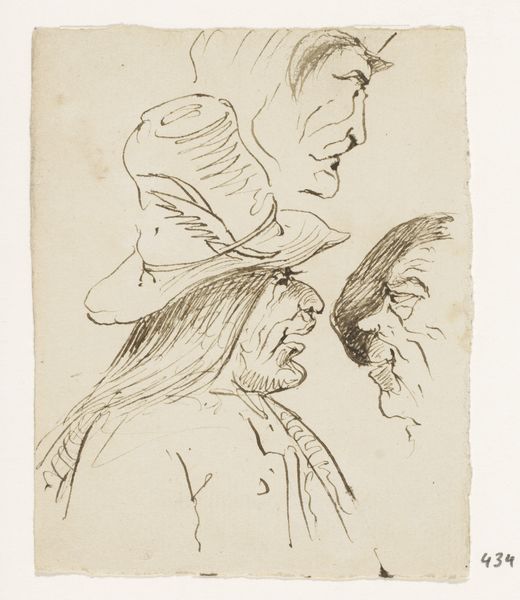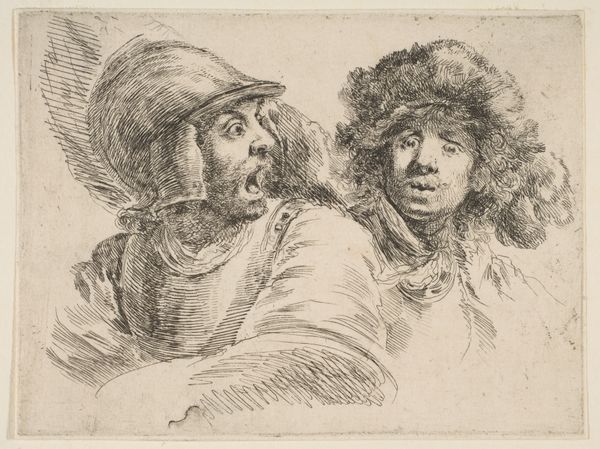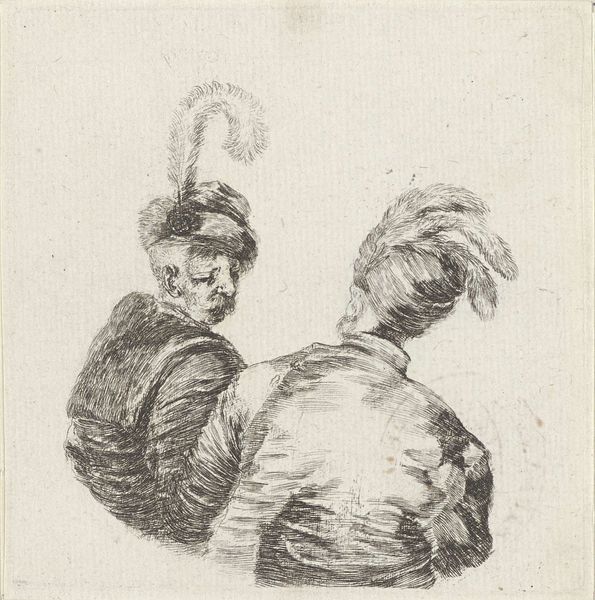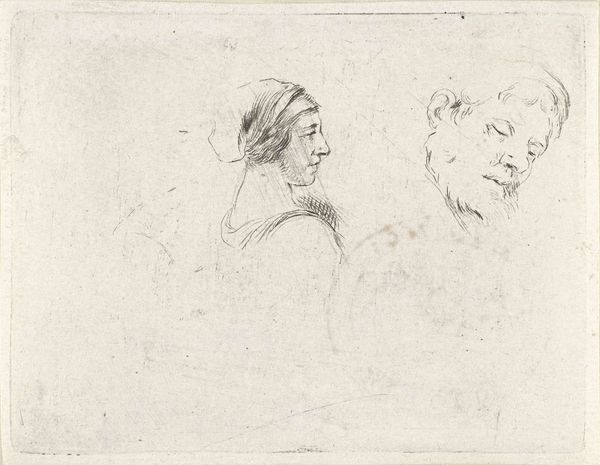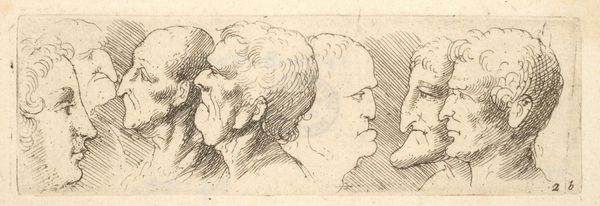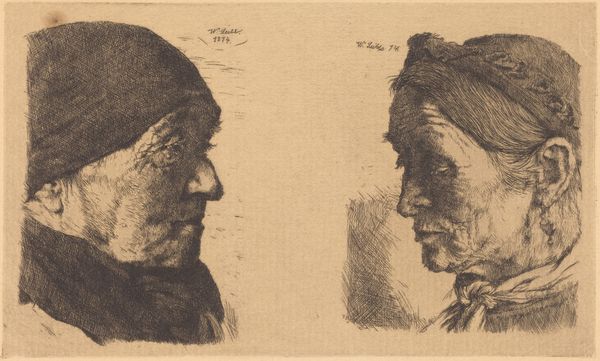
drawing, print, etching
#
portrait
#
drawing
#
baroque
# print
#
etching
#
men
#
portrait drawing
#
islamic-art
#
genre-painting
Dimensions: Plate: 3 1/4 × 5 11/16 in. (8.2 × 14.5 cm) Sheet: 6 5/16 × 8 3/4 in. (16 × 22.3 cm)
Copyright: Public Domain
Curator: This is Stefano della Bella’s etching, “Four Turks, Half Length,” created sometime between 1657 and 1667. Editor: My first impression is how textured it is! The density of those etched lines creates real visual weight, especially in their clothing. You can almost feel the coarse weave of the fabric. Curator: Precisely. Della Bella was deeply influenced by the Baroque fascination with exotic cultures, particularly Ottoman society. Prints like these circulated widely, shaping European perceptions. They offer us glimpses into a society perceived as radically different and powerful. Editor: It’s all about the process here. You can almost feel Della Bella's hand as he meticulously works the etching needle across the plate. This wasn't just a picture; it was skilled labor, reproduced for a burgeoning market interested in these "exotic" representations. Were these works commissioned specifically, or...? Curator: Some were commissioned, often by wealthy patrons, but the print medium also allowed for broader dissemination. Consider the cultural capital embedded in the image: these are not mere portraits, but studies in power and difference, consumed by European elites. Editor: And the clothing...the turbans themselves! The emphasis is on craft and design—materials brought to life. It begs the question: how accurate are these depictions? What materials and processes were actually employed to construct the original clothing, and how do they differ from the print's rendering? Curator: That's the crux of it. The etching process filters reality, presenting a vision through a specific cultural lens. How the artist transforms the costumes from the sitters they represent, how the audience engages and spreads these views, really highlights the political nature of art in Early Modern Europe. Editor: Absolutely. Examining the socio-economic context unveils so much more about the materiality. Where were the raw materials sourced, who fabricated these garments, and how did those labor relations impact European artistic production? It creates layers of questions to consider. Curator: Della Bella’s "Four Turks, Half Length" offers a portal into cultural exchange. Editor: It reminds us to look closely at both the depicted materials and the materiality of its making to decipher complex interactions.
Comments
No comments
Be the first to comment and join the conversation on the ultimate creative platform.
